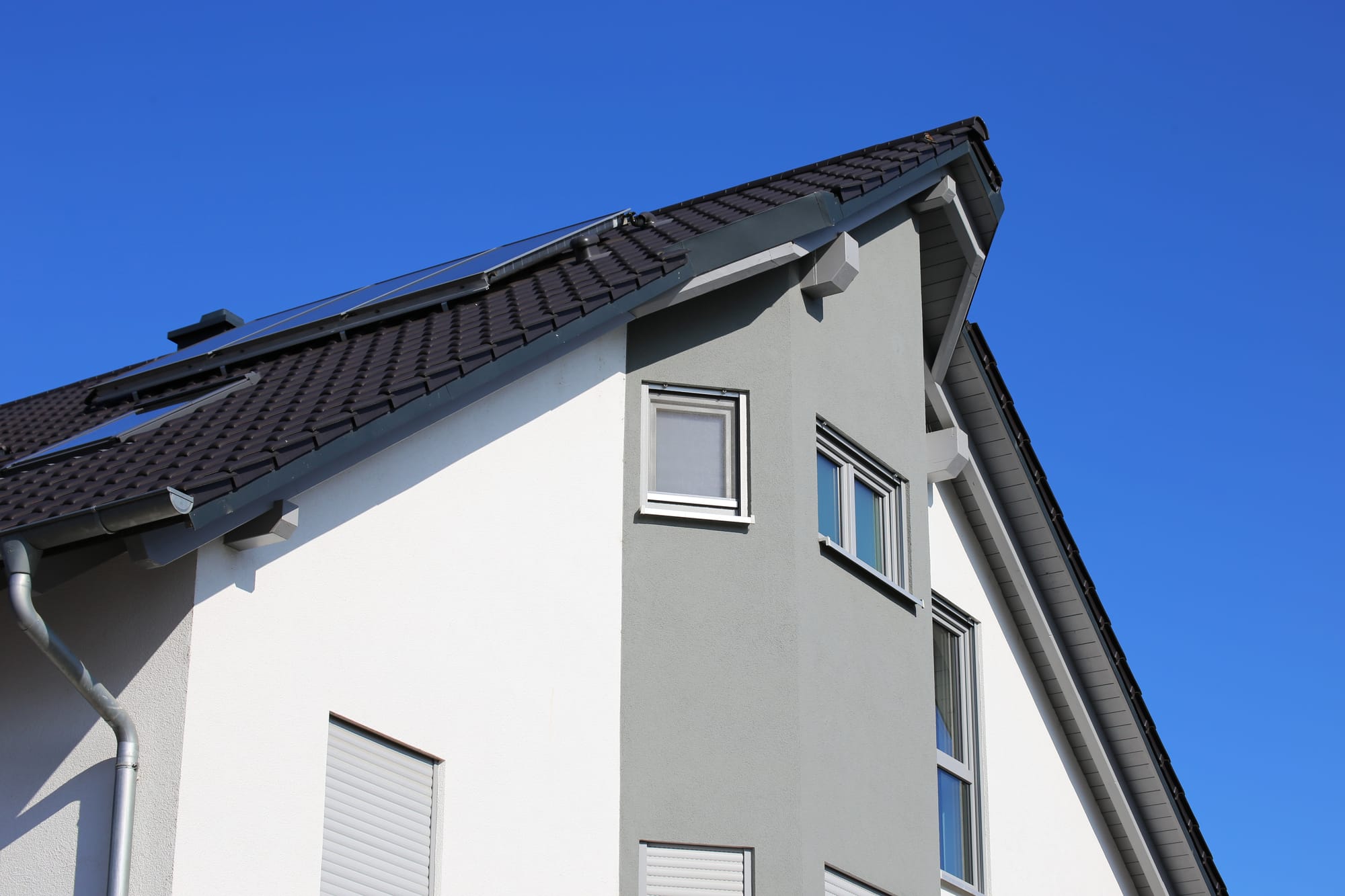How Weather Affects Paint Durability: What You Need to Know

Key Features:
- UV-Resistant Paint: Paint formulated with UV protection helps prevent fading, chalking, and deterioration from prolonged sun exposure.
- Moisture-Resistant Paint: Ideal for humid and rainy climates, this type of paint prevents water damage, including peeling, blistering, and mold growth.
- Cold-Weather Formulation: Specially formulated for low temperatures, these paints ensure proper curing and adhesion in colder climates, preventing cracking and peeling.
Weather And Paint
If you’ve ever wondered why the paint on your home’s exterior doesn’t last as long as expected, weather could be the primary culprit. Whether it's intense sunlight, heavy rainfall, or extreme temperature swings, the climate in which you live can significantly affect the durability of your paint. As a contractor who has seen firsthand how different weather conditions impact paint jobs, I can tell you that understanding how weather affects paint is key to choosing the right products and ensuring a long-lasting finish.Let’s dive into the ways weather influences paint durability and how you can protect your investment.
The Role of Temperature in Paint Durability
High Temperatures and Sun Exposure
Living in a sunny area? Prolonged exposure to the sun’s UV rays can take a serious toll on your paint job. Ultraviolet radiation breaks down the paint’s pigments and binders, causing it to fade, chalk, and lose its vibrancy over time. This is especially true for darker colors, which tend to absorb more heat and can deteriorate faster.
To combat this, choosing UV-resistant paint is crucial for homes in sunny climates. These paints are formulated with special ingredients to withstand the harsh effects of the sun, ensuring that your exterior paint remains vibrant for years to come.Moreover, high temperatures can cause paint to dry too quickly, which may result in improper adhesion, cracking, or peeling. For the best results, avoid painting in extreme heat, and always check the manufacturer's recommended temperature range for application.
Cold Weather Challenges
Just as high temperatures can be problematic, cold weather can also negatively affect paint durability. When temperatures drop, paint takes longer to cure, leaving it vulnerable to damage. If it freezes before it has fully dried, the paint may crack, blister, or fail prematurely. This is especially true for water-based paints, which are more sensitive to freezing temperatures.If you live in a region that experiences cold winters, you’ll want to choose a paint that’s specifically designed for low-temperature application. Cold-weather paints are formulated to cure properly in temperatures as low as 35°F, ensuring a durable finish even in challenging climates.
For optimal durability, try to schedule your exterior painting projects during milder weather to avoid these temperature extremes.
Things to Know:
- UV Protection is Essential: In sunny climates, use UV-resistant paint to prevent fading and chalking.
- Moisture-Resistant Paint Matters: Humid or rainy areas require paint designed to resist water damage and mold growth.
- Surface Preparation is Key: Proper cleaning, priming, and repair work ensure your paint adheres well and lasts longer.
- Cold Weather Can Impact Curing: Use paints formulated for low temperatures to prevent cracking or peeling in cold climates.
- Wind Can Cause Abrasion: Choose high-durability paints to withstand wind-driven debris that may damage the paint’s surface over time.
Humidity and Moisture: The Hidden Dangers
High Humidity Levels
Humidity plays a major role in how well paint adheres to surfaces and how long it lasts. When the humidity is too high, paint takes longer to dry, leading to a higher risk of bubbling and blistering. Excess moisture in the air can also prevent proper adhesion, causing the paint to peel prematurely.
In areas with consistently high humidity—like coastal or tropical regions—choosing mildew-resistant paint is essential. These paints contain anti-fungal agents that protect against the growth of mold and mildew, which thrive in moist environments.
Rain and Moisture Exposure
Rain and constant moisture can wreak havoc on exterior paint, especially if the surfaces weren't properly prepared. Rain-saturated surfaces can cause the paint to blister, peel, or flake away, reducing its lifespan significantly. In particularly rainy climates, it's important to ensure that surfaces are clean, dry, and primed before painting to help the paint adhere better and last longer.In addition to selecting high-quality paint, choosing a moisture-resistant primer is a wise investment for homes in wet climates. This will create a protective barrier that seals the surface, preventing moisture from penetrating and weakening the paint’s bond.
For homeowners in rainy or humid areas, planning your paint job around the weather forecast is essential. Always make sure there is enough time for the paint to dry before rain is expected to prevent washouts and compromised finishes.
The Impact of Wind on Paint Durability
While wind itself doesn’t directly damage paint, it can have indirect effects on your exterior surfaces. Wind-driven debris—such as dust, sand, or branches—can cause abrasion, leading to premature wear on the paint. Over time, this repeated exposure can erode the paint’s protective layers, leading to fading, chipping, or cracking.
To prevent wind-related paint damage, consider using high-quality, durable exterior paint that is designed to withstand physical wear and tear. This type of paint is formulated with enhanced binders and resins that make it more resistant to physical damage, ensuring your paint remains intact even in windy conditions.
Seasonal Cycles and Paint Longevity
The cyclical nature of the seasons also plays a significant role in paint durability. Constant expansion and contraction of building materials caused by temperature fluctuations can cause paint to crack and peel over time. This is especially common in regions with extreme seasonal changes, where surfaces expand in the heat and contract in the cold.
To mitigate the effects of seasonal changes, it’s important to choose a flexible paint that can expand and contract along with the surface without cracking. Elastomeric paints, for example, are highly flexible and designed to withstand these fluctuations, making them ideal for climates with temperature extremes.
In Our Experience
"Weather can have a huge impact on exterior paint, especially in regions with extreme temperatures, heavy rain, or intense sun. We've found that UV-resistant and moisture-resistant paints offer the best protection in harsh climates. Additionally, proper surface preparation—cleaning, priming, and repairing—is key to ensuring the paint lasts as long as possible, even when faced with challenging weather conditions. By choosing the right products and planning around the weather, you can extend the life of your paint and keep your home looking its best."
Choosing the Right Paint for Your Climate
Not all paints are created equal, and selecting the right type for your specific climate is crucial for achieving a durable finish. Here are some of the most important factors to consider:
- UV Resistance: If you live in a sunny climate, opt for paints with added UV protection to prevent fading and chalking.
- Moisture Resistance: For humid or rainy areas, choose a moisture-resistant paint with mildew-fighting agents to protect against water damage.
- Cold-Weather Formulation: In cold climates, look for paints specifically formulated for low-temperature applications to ensure proper curing and adhesion.
- Wind and Abrasion Resistance: If your home is located in a windy area or near the coast, choose a high-durability paint designed to withstand abrasion from wind-driven debris.
Preparation Is Key to Durability
While the weather undeniably affects paint durability, proper preparation is equally important for ensuring a long-lasting finish. A well-prepared surface is less likely to suffer from moisture infiltration, cracking, or peeling. Here’s how to prepare your surfaces for optimal paint durability:
- Clean the Surface: Dirt, dust, and mold can prevent paint from adhering properly. Always clean the surface thoroughly before applying primer and paint.
- Repair Cracks and Holes: Address any surface imperfections, such as cracks or holes, before painting. These flaws can allow moisture to penetrate the surface, leading to premature paint failure.
- Prime the Surface: Applying a high-quality primer helps seal the surface and ensures better adhesion of the topcoat, especially in extreme weather conditions.
By taking these steps, you can minimize the effects of weather on your paint and ensure a beautiful, long-lasting finish for your home.
Final Thoughts on How Weather Affects Paint Durability
The weather can have a profound impact on how long your paint job lasts, but by choosing the right paint for your climate and properly preparing the surfaces, you can protect your investment for years to come. Understanding how factors like temperature, humidity, wind, and seasonal cycles affect paint durability will help you make informed decisions and achieve the best possible results for your home.
Whether you’re a DIY enthusiast or hiring professionals, keep these weather-related tips in mind the next time you paint. Your home—and your wallet—will thank you!
Do You Have Questions? Give Us A Call With Any & All! 503-389-5758
-
People Also Ask:
How does weather affect paint durability?
Weather conditions like UV exposure, humidity, and temperature fluctuations can significantly impact paint durability, causing issues like fading, cracking, and peeling.
What is the best paint for humid climates?
For humid climates, moisture-resistant paint with mildew-fighting agents is ideal to prevent peeling, blistering, and mold growth on exterior surfaces.
Can wind damage exterior paint?
Wind can indirectly damage paint by driving debris like sand, dust, or branches against the surface, causing abrasions that wear down the paint over time.
-
SUBSCRIBE TO OUR BLOG: Stay informed with the latest in Painting and DIY projects by subscribing to Lightmen Painting. Get insights, tips, and more delivered straight to your inbox. We would also love to know what you would like to read about, leave thoughts on where we should go next. Interests, Topics, Ideas, all are welcome.
If your in the Portland, Or. area and need advice or a free no obligation estimate call us at 503-389-5758 or email scheduling@lightmenpainting.com
Shout Out:
Celebrating HomeGuide: Your Trusted Source for Home Improvement Cost Insights
From the team at Lightmen Painting, we extend our highest praise to HomeGuide for providing valuable information on home improvement costs, including detailed breakdowns for exterior house painting. Just as we strive for excellence and transparency in our painting services, HomeGuide empowers homeowners with clear, actionable cost estimates to help them plan their projects effectively. Their commitment to quality and homeowner education aligns perfectly with our mission to deliver top-tier painting solutions.
Thanks for stopping by Lightmen Daily! Stay tuned for more practical tips and expert advice on making your painting projects flawless, from wall to floor!
Definitions
- UV Resistance: The ability of paint to resist damage from ultraviolet light, preventing fading and chalking in sunny climates.
- Moisture Resistance: A paint’s ability to resist water and humidity, preventing peeling, blistering, and mold growth.
- Cold-Weather Paint: Paint formulated to cure properly in low temperatures, typically as low as 35°F, ensuring durability in cold climates.
- Chalking: The degradation of paint caused by UV exposure, resulting in a white, powdery residue on the surface.
- Blistering: Bubbles that form under the paint surface due to trapped moisture or painting in high humidity.
- Expansion and Contraction: The natural process where building materials expand in hot weather and contract in cold weather, often causing paint to crack or peel.
- Elastomeric Paint: A flexible, durable paint designed to expand and contract with surface materials, ideal for areas with temperature fluctuations.
- Abrasion Resistance: A paint’s ability to resist wear and tear caused by wind-driven debris or physical impact.
- Mildew-Resistant Paint: Paint containing anti-fungal agents that prevent mold and mildew growth in humid or rainy climates.
- Primer: A preparatory coating applied to ensure proper paint adhesion and durability, especially important in extreme weather conditions.
Lightmen Painting Serving: Portland, Tigard, Lake Oswego, Tualatin, West Linn, Milwaukie, Sherwood, Happy Valley, Oregon City, Beaverton, Hillsboro, Gresham -Trade Partners-
